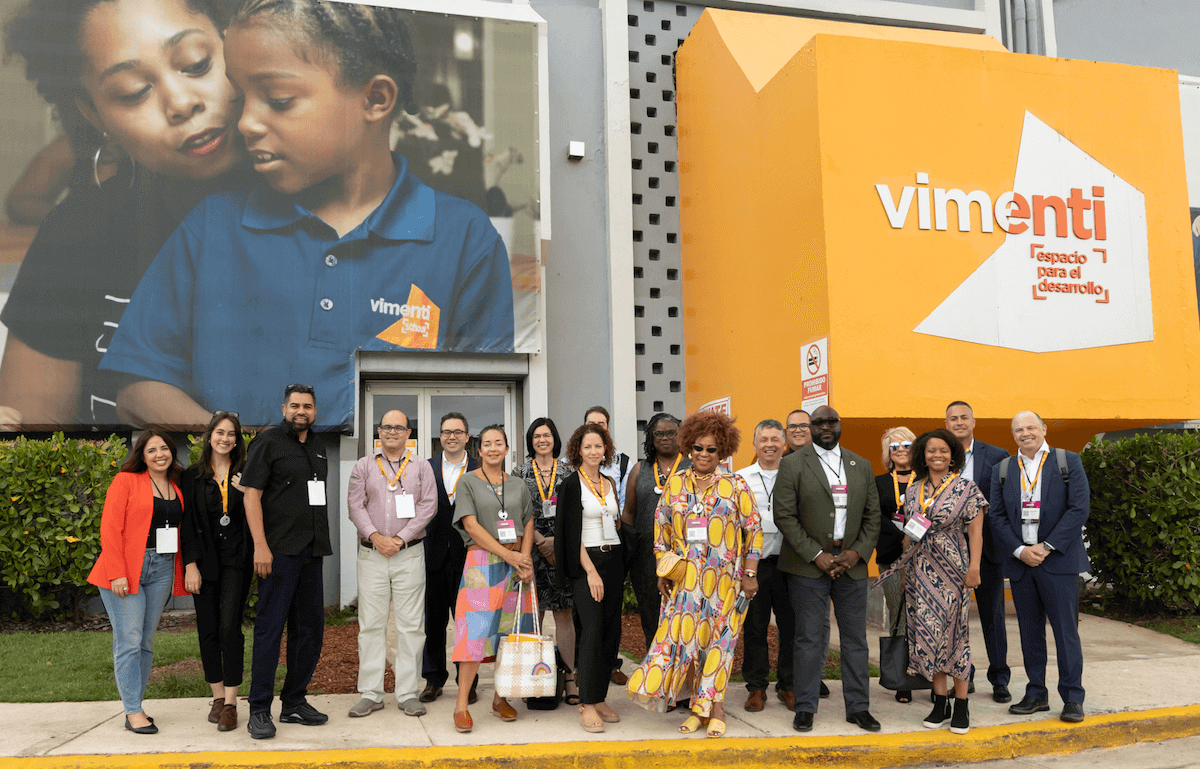Greetings, Agents of Impact!
Featured: Catalytic Capital
How foundations can use impact investments to leverage their grant capital. Foundations using their endowments to make impact investments are finding mission-aligned opportunities with returns that equal, or beat, returns on legacy investments. But high returns don’t necessarily mean high impact. Some foundations are using so-called program-related investments from their grantmaking budget to prove out the value proposition of catalytic capital. “Catalytic capital may be the key to maximizing impact,” writes Stacey Faella of the $80 million Woodcock Foundation in a guest post on ImpactAlpha. By increasing the supply of capital with impact as a primary purpose, she says, catalytic investments are “expanding the type of impact that’s possible, and accelerating innovation that can unlock new capital for impact.”
Some investments that are worth making don’t deliver returns that match the risks. The Woodcock Foundation has created a $4 million catalytic capital budget and built a catalytic portfolio of 20 investments “that expand our impact not just through the recycling of capital after repayment, but also through enabling follow-on capital,” Faella says. The return expectations: Recovery of invested capital, without additional returns. “We expect returns on lower risk or for very successful investments to cover losses on bets that don’t work out,” she writes. Program-related investments have sometimes been criticized for reducing the amount of grant capital available for the wide range of worthwhile initiatives that don’t have recurring revenues or an investable business case. Faella takes the argument head on. After calculating the difference between return-of-capital and the 7-8% return expectations on the rest of the portfolio, Woodcock did indeed reduce its annual grant budget by $300,000, or less than 10%, in order to preserve its overall assets, she says. The upshot: “We’ve been able to nearly double the amount of impact-first capital in our budget, optimizing the impact of scarce resources.”
- Impact first. Woodcock was an early backer of the REDF Impact Investing Fund to make loans to social enterprises that employ formerly incarcerated people and individuals facing homelessness. The foundation invested in LISC’s Inclusive Creative Economy Fund designed in collaboration with Upstart Co-Lab, which is now raising a larger fund. More recently, Woodcock backed Potlikker Capital’s charitable loan fund to provide reparative capital to BIPOC farmers. Woodcock’s loans to community development financial institutions have financed resident ownership of mobile homes, investments in Native-owned businesses, and businesses that provide quality jobs.
- Keep reading, “How foundations can use impact investments to leverage their grant capital,” by Woodcock Foundation’s Stacey Faella on ImpactAlpha. Catch up on all of ImpactAlpha’s coverage of catalytic capital, supported by the Catalytic Capital Consortium, or C3.
Dealflow: Energy Transition
Canada’s Heliene raises $170 million in equity and debt for US solar plants. Demand is surging for solar cells that are manufactured closer to home in order to reduce shipping costs, speed delivery, and qualify for tax credits under the Inflation Reduction Act (see, “Clean energy investors are not waiting for Inflation Reduction Act’s billions to flow”). Ontario-based Heliene operates “low human-touch, highly robotized” factories in the US and Canada. “The well-designed incentives and the industrial policy included in the IRA will drive continued growth of solar projects,” said Heliene’s Martin Pochtaruk. The company’s financing bundle includes a $150 million line of credit from infrastructure investor Orion Infrastructure Capital, which also backed Heliene’s $20 million equity round alongside 2Shores Capital, Valta Energy and Bullrock Renewables.
- Solar factory. Last month, Heliene agreed to sell Boston-based community solar developer Nexamp 1.5 gigawatts of solar modules to be produced in Mountain Iron, Minn. The modules will supply 400 community solar projects serving over a quarter million households, Nexamp said, making it one of the largest purchases of community solar modules in US history. Heliene’s new financing and federal tax credits will help it build the 500-megawatt plant in Minnesota, which the company expects to create 300 green jobs. Heliene hopes to reach two gigawatts of manufacturing capacity next year.
- Share.
World Fund adds €50 million to European climate tech venture fund. The Berlin-based climate tech investor secured backing from KfW Capital, the German development bank’s venture arm, and Lithuanian utility Ignitis Group. World Fund, which launched in 2021, is targeting a raise of €350 million ($375 million) to invest in Europe’s early and growth-stage climate entrepreneurs. It has backed 10 companies, including seed-stage Freshflow, which last year raised €1.7 million for an AI-powered grocery inventory system to curb food waste. It also led a €128 million equity round for IQM Quantum Computers, which is helping to model climate solutions “impossible to achieve through current levels of computing power.”
- Climate VC gaps. After defying gravity for months, climate tech funding earlier this year suffered an even steeper drop than overall tech VC funding. The biggest gap now is growth and late-stage funding, World Fund says (see, “The new, uncomfortable reality for climate tech VC”). Also backing World Fund are the European Investment Fund, which previously invested €50 million, and the UK Environment Agency Pension Fund.
- Share this post.
Florrent raises $2.1 million to engage farmers of color in energy storage. How can farmers help “electrify everything”? By growing more hemp. Massachusetts-based Florrent is developing ultracapacitors, a form of large-volume energy storage that can retain and release power faster than batteries. Ultracapacitors have the potential to boost the performance of electric vehicles, renewable energy and other clean technologies. The company’s round was led by MassVentures, with backing from MassMutual Catalyst Fund, Boston Impact Initiative and others.
- Inclusive procurement. Florrent is looking to procure its supply of hemp, a key input for its design, from farmers of color. “By engaging domestic farmers in the clean energy market, we’re bridging the gap between environmental sustainability and social equity,” said Florrent’s Jose LaSalle. The company says its hemp-based activated carbon outperforms materials derived from coconut husks.
- Check it out.
Dealflow overflow. Other news crossing our desks:
- The McKnight Foundation commits $150 million to the $500 million Press Forward initiative, led by the McArthur Foundation, to revive local news establishments in the US. It’s also directing $15 million to tech tools for journalists. (McKnight Foundation)
- Common Trust raised $2.6 million in seed funding to help business owners develop and execute employee-ownership transitions. (You first read about Common Trust’s strategy last year on ImpactAlpha: “Through ‘ownership trusts,’ investors can help employees become owners, and owners retire”). (TechCrunch)
- Trill Impact Ventures led a $50 million funding round for Open Cosmos to boost the use of open satellite-data for climate change and humanitarian disasters. (Trill Impact)
Six Short Signals: What We’re Reading
⚡🚗 Electric car tipping point. Technology adoption becomes embedded at about 5% penetration, the point when early adopters are joined by the early majority. Electric cars have reached 5% of new car sales in nearly a dozen countries, according to Bloomberg Green. (Bloomberg)
🔋 Striking lithium gold. A world-beating deposit of lithium along the Nevada–Oregon border, needed to meet surging demand for the key ingredient in electric car batteries, is larger than deposits found beneath a Bolivian salt flat, previously considered the world’s largest. (ChemistryWorld)
🛢️ Oil majors’ climate goals. Saudi Aramco, the world’s biggest oil company, has the weakest climate pledges. Italian energy company Eni is the only energy major with targets “potentially” aligned with Paris. A Carbon Tracker ranking of emissions-reduction commitments made by 25 of the world’s largest listed energy companies shows climate progress has stalled. (Carbon Tracker)
🗳️ Proxy season snapshot. Shareholder advocates at As You Sow conducted 210 corporate engagements with 169 companies addressing climate change, racial justice and other issues this proxy season. Of the 111 resolutions filed, almost half were withdrawn after the company agreed to terms. Of the 48 resolutions that went to a vote, 96% exceeded the SEC’s resubmission threshold. (As You Sow)
🌎 Unlocking SDG opportunities. Despite early hype, neither companies nor investors view the $2.5 trillion annual gap to achieve the UN Sustainable Development Goals as an investment opportunity, argues Oxford Said’s Robert Eccles. A massive increase in catalytic capital is needed to make SDG investments pencil out. (Responsible Investor)
👷🏽 Worker ownership is bipartisan. Employee-owned companies – from Publix to Southwest Airlines – are demonstrating the potential to grow successful businesses while improving workers’ lives (listen to our podcast conversation with Impact America’s Jack Moriarty, “Why employee ownership is the next big thing in impact – and America”). In the US, the bipartisan WORK Act establishes state centers to help businesses convert to employee ownership. (The Hill)
Agents of Impact: Follow the Talent
Boston Impact Initiative is hiring a development director and a portfolio manager… Bezos Earth Fund has an opening for an events manager in Washington, DC… The Global Impact Investing Network is looking for a communications associate in New York… Builders Vision is on the hunt for a VP of ocean investment in Chicago… Aqua for All is looking for an impact finance manager in The Hague, Netherlands… Also in The Hague, the Netherlands Advisory Board on Impact Investing is recruiting a communication and impact manager.
Capital Impact Partners is accepting applications from real estate developers of color in Dallas for its Equitable Development Initiative for access to training, mentorship and financing… Tideline is hosting “Navigating impact lenses,” with Criterion Institute’s Joy Anderson, Rhia Ventures’ Erika Seth Davies, Calvert Impact’s Caitlin Rosser, Tim Docking of the Refugee Investment Network, and Cristina Shapiro of UNICEF USA, Tuesday, Sept. 19.
👉 View (or post!) more impact investing jobs on ImpactAlpha’s Career Hub.
Thank you for your impact!
– Sept. 12, 2023











